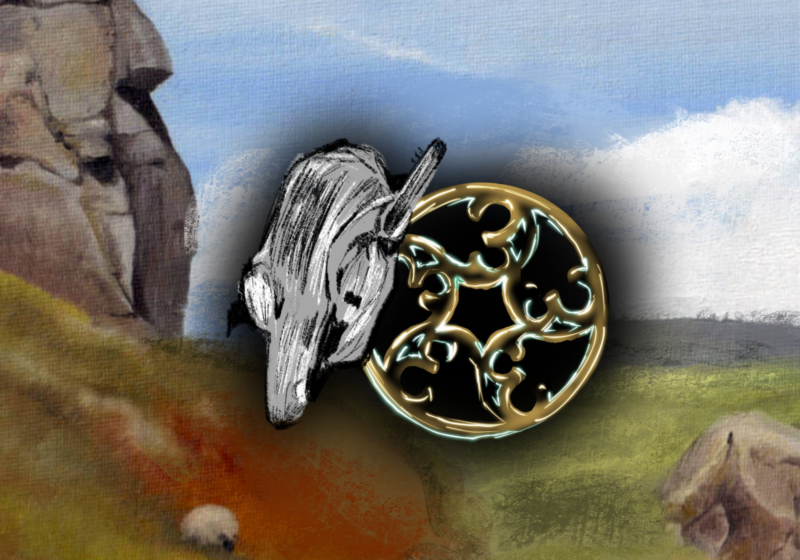“I let my racket do the talking,” tennis legend Pete Sampras said in a response to a poll. “That’s what I am all about, really. I just go out and win tennis matches.”
While Sampras has retired, leaving Andre Agassi as the lone survivor of the older generation, a new Pete Sampras is emerging. His name is Roger Federer.
For those of you who haven’t heard of this Swiss tennis sensation, Federer has been dominating the tennis courts for the past year and a half.
In 2004, Federer won three of the four Grand Slam tournaments while maintaining a perfect record against the top 10 players of the world for the entire year.
Federer was invincible – until two weeks ago. At the 100th Australian Open, this year, Russian challenger Marat Safin did what no opponent had done in what seemed an eternity.
In a gripping five-set semifinal match, Safin emerged victorious for only the second time in eight tries against Federer.
But for those who think men’s tennis is going to be more competitive than last year, think again.
While it’s true that Federer’s 26-match winning streak was halted, he is still, by far, the man to beat at any tournament.
Federer’s defeat was exactly that – Federer lost, and Safin didn’t win. After having match point in the fourth set, Federer somehow found himself saving six match points before eventually accepting defeat.
But a loss had to happen sometime. While I must give credit to Safin for playing some exceptional tennis, we must keep in mind that Federer was not. Suffering from injuries and the eventual off day, Federer just wasn’t at his best.
This behavior is quite unusual for him. His performance was especially bizarre after he drubbed four-time Australian Open champion Agassi in straight sets in the quarterfinals.
It should also signal to the world that despite not being 100 percent fit – both mentally and physically – it still took Safin seven match points and five sets to overcome the master.
Federer was down 2-5 in the final set before forcing Safin to win by two games.
Even when in the pits, Federer found some sort of reserve. And the only reason he actually did lose was because of a slip while retrieving a shot. Had Federer not fallen, he probably would have won the match and the tournament.
Federer is often compared to Sampras in both tennis technique and mental toughness.
In a post-retirement interview, Sampras was asked what the turning point in his career was.
Sampras replied that his 1992 U.S. Open final loss to Stefan Edberg spawned his era of dominance. “I realized that I had given up in the match,” he said. “Just a touch, but enough to lose. I came to the realization that getting to finals wouldn’t be good enough anymore.”
This semi-final loss to Safin will probably be Federer’s turning point.
Having already won four Grand Slams, Federer will probably re-evaluate his career goals after this loss.
Chances are there will be more Federer domination than ever before. From the point of view of the other tennis players in the world, Federer’s loss to Safin will do more harm than good to them. From a spectator’s view, it’s not necessarily a bad thing.
While complete supremacy can turn people off to any sport, the spectators would be foolish to complain about it in tennis.
Federer has something to offer that no one currently can offer – the ability to make tennis look easy.
For the first time since Sampras before the last stage of his career – some five years ago – we have a tennis player who not only is exceptional at playing tennis but also can inspire others to pick up a racquet.
That’s probably one of the reasons why I’ve always preferred Sampras to Agassi.
While Agassi was hustling and shuffling across the court, Sampras seemed to glide oh-so-perfectly while making his trademark forehand passing shot.
Federer exudes the same kind of brilliance.
Anyone who has watched his matches and followed the sport for a few years knows this.
Federer’s service is almost unbreakable, his forehand penetrating and his backhand – simply glorious. Federer at the net is even more impressive, at times, than German icon Boris Becker.
Being able to chase down every ball might indicate superior physical fitness but also indicates the inability to control the match.
If you’re running more than your opponent, then clearly your opponent is the one dictating play.
This would probably explain Federer’s continuous destruction of Australian Lleyton Hewitt, which among many embarrassing moments include the 0-6, 6-7, 0-6 hammering in the 2004 U.S. Open final.
But Hewitt is not alone. American Andy Roddick is probably considering a career change after only one win in nine meetings with Federer. And while Safin did defeat Federer, it was only his second win in eight career meetings with Federer.
However, Safin did do something that most people weren’t able to do against Federer – in addition to defeating him, he mixed it up.
Safin tried to keep Federer guessing throughout the match. At times, he would dominate rallies like Federer would normally do.
That’s precisely the kind of player it’s going to take to defeat Federer. It will take someone who’s aggressive with an all round game and the ability to never let Federer settle in.
However, more importantly, it’ll take someone who’s extremely tough mentally. In other words, another Roger Federer.
If you went through 2004 rooting for anyone other than Federer, it might be time to rethink that strategy.
The Federer era has begun, and it’s not going to fade anytime soon.
Madhur can be reached at smadhur@campustimes.org.





